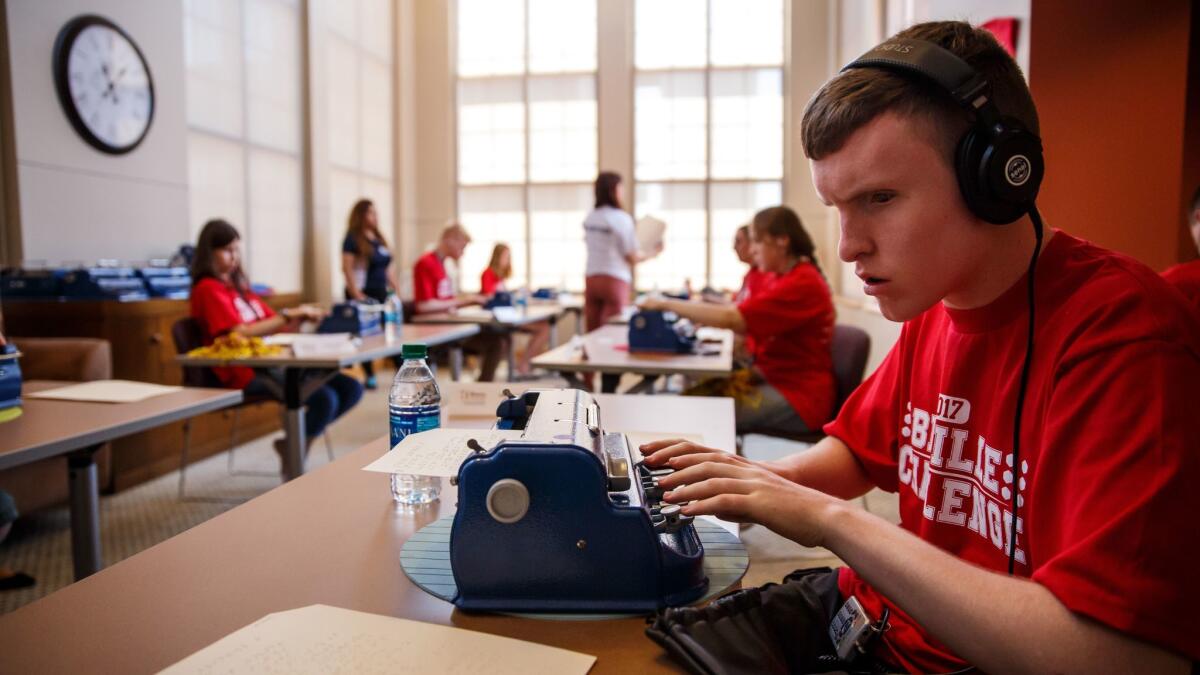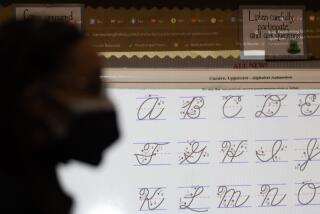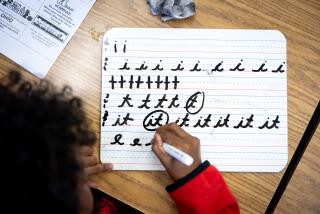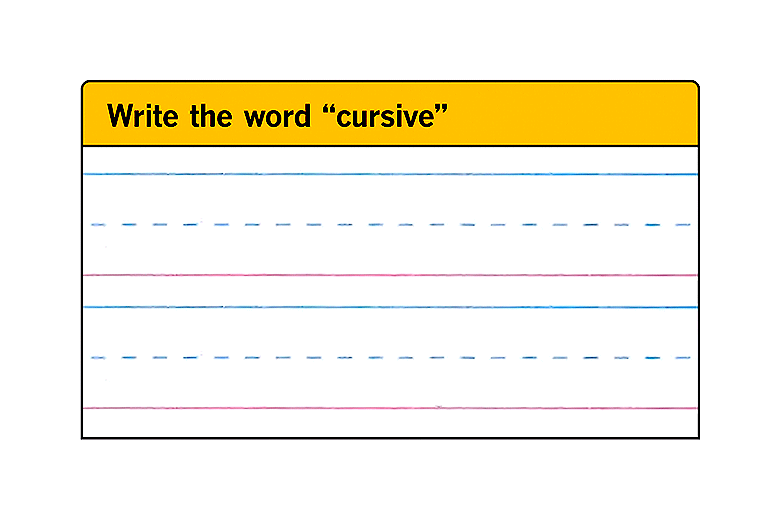Students from around the country compete in the national braille competition at USC

Fingers whirred, swiftly pressing down keys that would translate spoken words into lines of Braille.
For 45 minutes on Saturday morning, 10 visually impaired high school students tapped furiously on Perkins Braillers — machines similar to typewriters that imprint the code on paper — while transcribing passages read aloud. This was the first exam of the daylong Braille Challenge finals, a national competition for low-vision and blind students 6 to 19, held this year at USC.
Cricket Bidleman of Morro Bay was among the 50 finalists from across the country and Canada to participate in the finals. The 18-year-old has grown up with the Braille Challenge — she started competing in 2006 when she was 7 and has won the finals four times. This was her last competition, and she has “loved every year I’ve been here.”
“This competition teaches me and other people that it is possible to be successful,” said Bidleman, who will attend Stanford in the fall and hopes to study anthropology. She said she has made some of her closest friends through the Braille Challenge, and while she’ll miss competing with them, “we’ll still text.”
During the day, students — divided into five age groups — proofread passages, interpreted charts and graphs, answered questions about selected readings, and transcribed other selections as quickly and accurately as possible. The younger age groups also completed a spelling test.
The winner of the oldest age group this year was Mitchell Bridwell, of Pittsboro, Ind.
To get to Los Angeles, the students first had to qualify in preliminary rounds, held January through March. In total, students from 22 states and two Canadian provinces competed in the finals Saturday.
This year, five Californians competed in the finals: Bidleman, Dorothy Cho of Anaheim, Miles Lima of Manteca, Darren Ou of Sunnyvale and Sheema Shaikh of Corona.
The Braille Institute, based in Los Angeles, has hosted the competition since its inaugural year in 2000, with the aim of encouraging Braille literacy and demystifying higher education. According to the National Federation of the Blind, only 32% of blind or visually impaired people in the country have a high school diploma or GED, and just 14% hold a bachelor’s degree or higher.
For the first time this year, the competition moved from the Braille Institute’s facility to USC so children and their families could experience a college campus.
Braille Institute President Peter Mindnich said he hoped the competition helps participants feel more independent and “imagine the possibilities” open to them.
‘These kids are all superstar students,” Mindnich said. The Braille Challenge, he said, “is a doorway” to their future.
Indeed, among their ranks were children who aspired to be teachers, lawyers, chefs or musicians. One said she hoped to become president of the United States.
With social activities, such as a dance and an ice cream gathering, the competition also helps students form lasting bonds with other blind or low-vision peers. Because many students attend regular public schools, the competition is often the only place where they spend time with children like themselves.
Sergio Oliva, direction of national programs for the Braille Institute, said he has seen students grow from shy youngsters into confident young adults over their years in the competition. He recalled one student at the dance a few years ago, hanging out with friends. “ ‘Oh, this is how it feels to go to prom,’ ” Oliva remembered the student saying.
“It made me realize that this Braille Challenge is something they look forward to,” Oliva said.
Miles’ father, Kenny, said he was eager for his son to make new friends from across the country at his first Braille Challenge finals. The 8-year-old — who lost his vision because of eye cancer — practiced spelling street names on the drive down from Manteca to prepare for the competition.
Though it was his first time in the finals, Miles wasn’t nervous. Sitting in the courtyard of a USC apartment complex, where his family was staying courtesy of the Braille Institute, the youngster rattled off trivia about the history of Braille and his dreams of visiting every national park in alphabetical order, among a dozen other topics. He had studied enough.
“Same old, same old,” he said, grinning.
UPDATES:
8:45 p.m.: This story has been updated with the name of the winner in the oldest age group.
This article was originally posted at 6:30 p.m.
More to Read
Sign up for Essential California
The most important California stories and recommendations in your inbox every morning.
You may occasionally receive promotional content from the Los Angeles Times.










